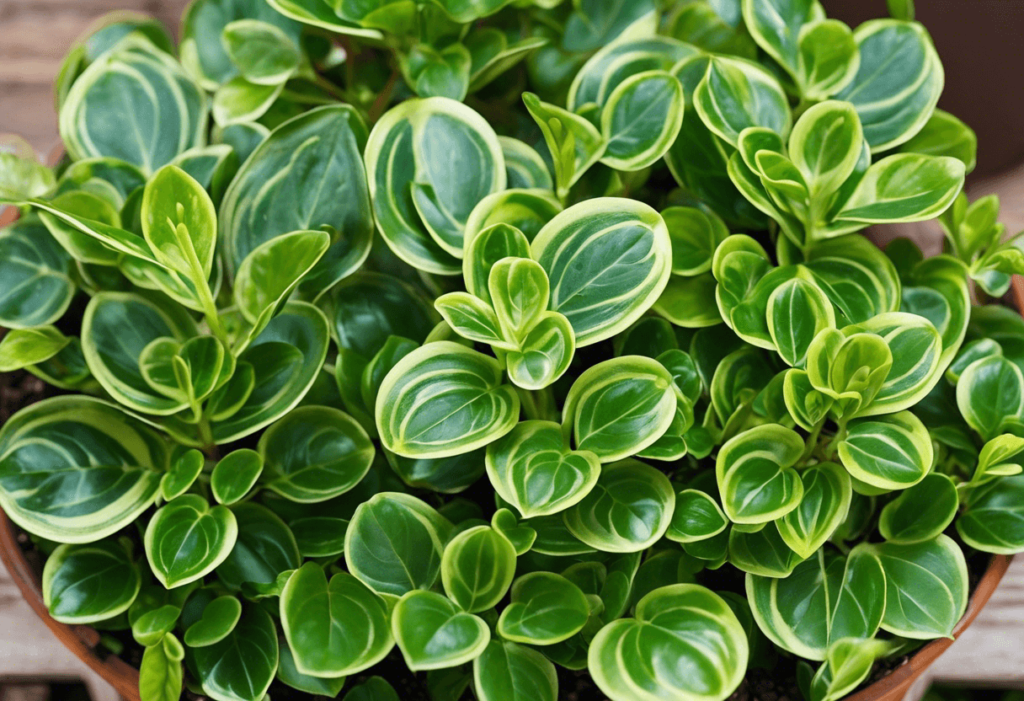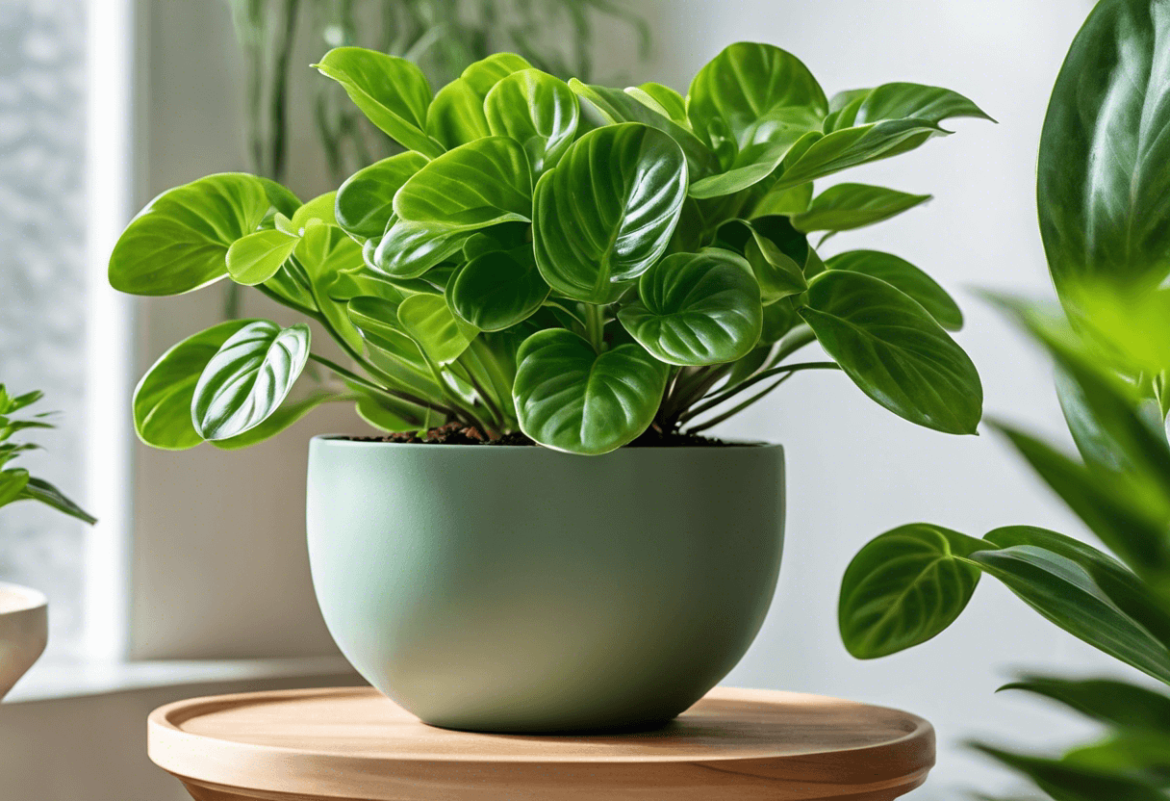Understanding Peperomia Obtusifolia: An Overview
Peperomia obtusifolia, known as the baby rubber plant or American rubber plant, belongs to the Peperomia genus, which comprises over 1,000 species. Native to South America, this evergreen perennial is cherished for its succulent, glossy leaves and compact growth habit. Thriving in indirect light and requiring minimal water, Peperomia obtusifolia adapts well to indoor conditions. Its durability and easygoing nature make it ideal for individuals with a busy lifestyle or beginners in plant care. Despite its nickname, it is not related to the rubber tree and is non-toxic, making it safe for homes with pets and children.
Optimal Light Conditions for Healthy Growth
Peperomia obtusifolia thrives in bright, indirect sunlight. It should be placed near a window that receives ample light, but direct sun exposure must be avoided to prevent leaf burn. The plant can tolerate low light conditions, but growth may be slower and the vibrant foliage color could fade. A north or east-facing window is ideal, providing the perfect balance of light throughout the day. Rotating the plant occasionally ensures all sides receive equal light, promoting even growth. To maximize growth, a consistent light source is essential.
The Right Watering Routine for Peperomia Obtusifolia
Proper hydration is key for Peperomia obtusifolia’s vitality, requiring a delicate balance as they are prone to root rot when overwatered. The optimal watering routine involves:
- Allowing the topsoil to dry out between waterings.
- Utilizing lukewarm water to avoid shocking the plant’s roots.
- Watering the plant thoroughly until excess drains from the bottom, ensuring deep soil moisture.
- Ensuring pots have drainage holes to prevent water accumulation.
- Reducing frequency in winter months when plant growth slows.

Consistency and observation will maintain the perfect moisture level for a thriving Peperomia obtusifolia.
Soil and Fertilization: Nourishing Your Plant
Peperomia obtusifolia thrives in well-draining soil that facilitates adequate root aeration. A mix of peat, perlite, and coarse sand suits its preference, mimicking its native tropical habitat. When fertilizing, use a balanced, water-soluble fertilizer diluted to half-strength. Feed the plant once per month during the growing season, typically spring through summer. Over-fertilization should be avoided to prevent root burn. Ensure the soil partially dries out between waterings, allowing roots to breathe. This regimen nurtures the plant without overwhelming it, fostering healthy growth and lustrous foliage.
Temperature and Humidity Preferences for Thriving Peperomia
Peperomia obtusifolia flourishes in warm environments, with ideal temperatures ranging between 65-75°F (18-24°C). Stable conditions, avoiding fluctuations from drafts or heating vents, are essential for its health. In terms of humidity, Peperomia thrives in moderate to high humidity levels, around 40-50%. While it can tolerate lower humidity found in typical home environments, providing a boost, such as with a pebble tray or humidifier, promotes more vibrant growth and lusher foliage. Avoiding extremes in temperature and humidity will ensure your Peperomia remains robust and happy.
Pruning and Maintenance: Keeping Your Peperomia in Shape
Peperomia obtusifolia thrives with minimal care, requiring only occasional pruning to promote a lush, compact shape. To maintain visual appeal and encourage healthy growth, follow these simple steps:
- Inspect regularly for damaged or withered leaves and stems.
- Use clean, sharp shears to make precise cuts, avoiding unnecessary damage to the plant.
- Prune in the spring or early summer, when the plant is in its active growth phase.
- Limit pruning to 20-30% of the plant to reduce stress and maintain vigor.
- Regularly clean the leaves with a damp cloth to allow for efficient photosynthesis.
- Rotate the plant for even growth due to light exposure.
These maintenance tips will ensure your Peperomia obtusifolia remains vibrant and robust throughout the year.
Troubleshooting Common Issues with Peperomia Obtusifolia
Peperomia Obtusifolia, while hardy, can encounter problems. Below are solutions to typical issues:
- Yellowing leaves: This often indicates overwatering. Allow soil to dry between watering sessions.
- Leggy growth: Insufficient light is likely. Position your plant in bright, indirect sunlight.
- Drooping leaves: Underwatering might be the cause. Check the topsoil moisture and water accordingly.
- Rotting stems: Stem rot is a sign of excessive moisture. Ensure proper drainage and reduce watering frequency.
Regularly inspecting the plant for pests and cleaning the leaves can prevent infestations and diseases, maintaining your Peperomia’s health.
Frequently Asked Questions
Q: What is Peperomia Obtusifolia?
A: Peperomia Obtusifolia, also known as the baby rubber plant, is a compact houseplant with glossy green, succulent-like leaves that is low-maintenance and pet-friendly.
Q: How do I care for Peperomia Obtusifolia?
A: Peperomia Obtusifolia thrives in bright indirect light, and prefers a well-draining potting mix. Water sparingly and avoid overwatering to prevent wilting.
Q: How do I propagate Peperomia Obtusifolia?
A: Peperomia Obtusifolia can be propagated through stem or leaf cuttings, and it is best done during the active growth period for the plant.
Q: What are the common pests for Peperomia Obtusifolia?
A: Common pests that can affect Peperomia Obtusifolia include spider mites, mealybugs, and aphids. Regular inspection and maintaining good air circulation can help prevent infestations.
Q: When should I repot my Peperomia Obtusifolia?
A: Repot your Peperomia Obtusifolia when the roots have outgrown the current pot, usually every 2-3 years. Use a slightly larger pot with well-draining soil.
Q: What is the ideal environment for Peperomia Obtusifolia?
A: Peperomia Obtusifolia thrives in environments with bright indirect light, higher humidity, and temperatures around 65-75°F (18-24°C).
Q: What is the significance of the variegated leaves of Peperomia Obtusifolia?
A: The variegated leaves of Peperomia Obtusifolia add decorative appeal to the plant, featuring creamy white or marble-like patterns on the dark green foliage.
Q: How can I ensure the health of my Peperomia Obtusifolia?
A: To maintain the health of your Peperomia Obtusifolia, avoid overwatering, provide sufficient indirect light, and periodically inspect for any signs of pests or disease.
Q: Can Peperomia Obtusifolia grow in lower light conditions?
A: Peperomia Obtusifolia can tolerate lower light conditions, but it thrives best in bright indirect light. It is important to avoid direct sunlight to prevent leaf burn.
Q: Is Peperomia Obtusifolia suitable for indoor gardening?
A: Yes, Peperomia Obtusifolia is a popular choice for indoor gardening due to its compact size, low-maintenance nature, and decorative foliage, making it an ideal houseplant.
